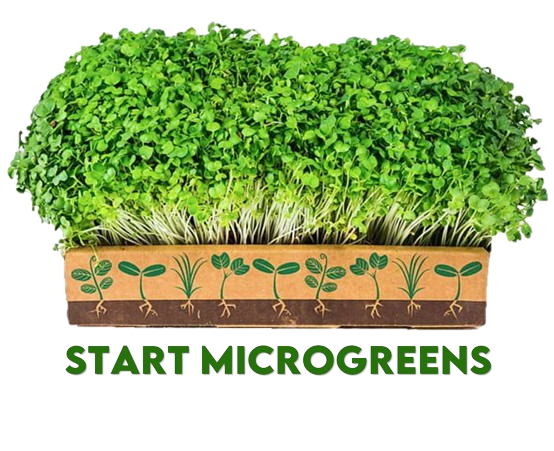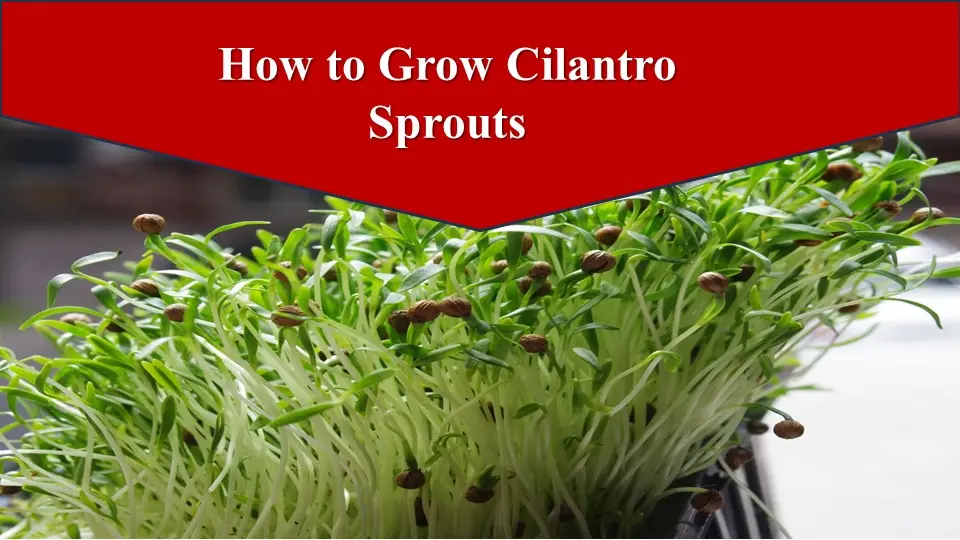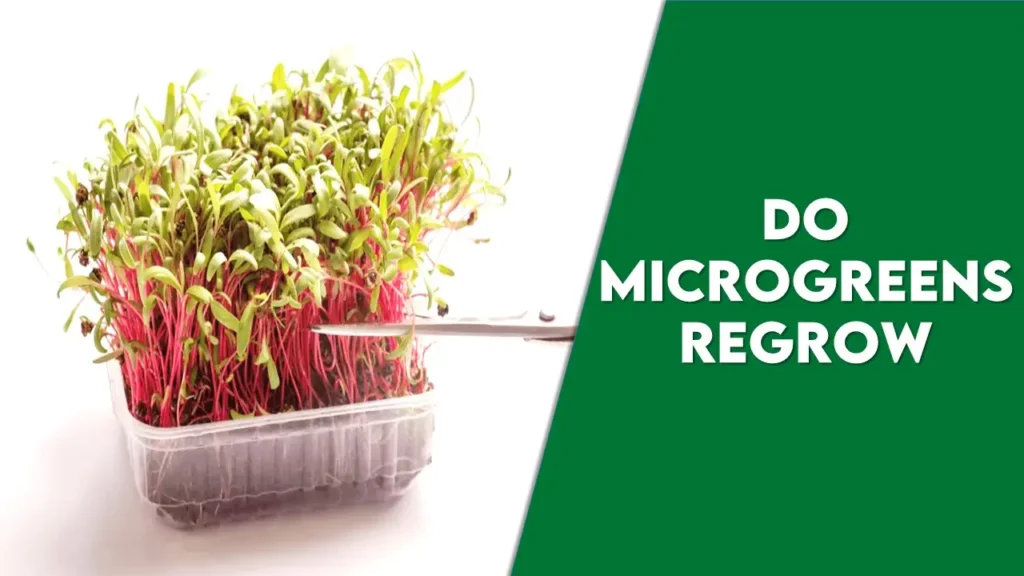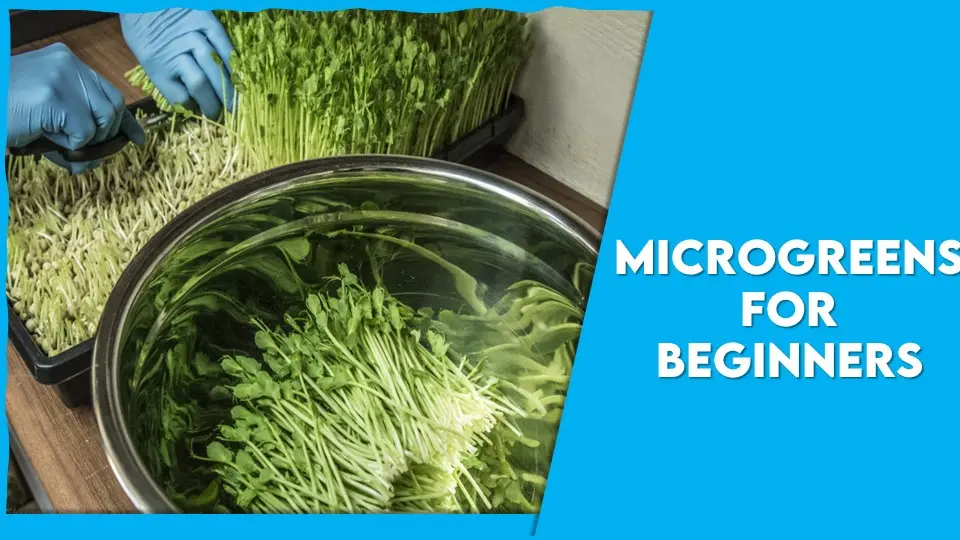How to Grow Cilantro Sprouts – The Best Facts One Needs To Know
Among the endless treasure of food flavors, it is rare to come across herbs that can match the deep impact or equally punchy flavor profile of cilantro sprouts. Appreciated for its freshness, citrusy element, and marvelous aroma, cilantro, has featured in millions of kitchens around both this globe and continents, giving unique flavor to recipes ranging from salsa to salads, curry to soups. Cilantro sprouts, being the popularly young form of this herb, usually cilantro microgreens or coriander microgreens, embody the essence of the tenderness of cilantro.
Brightly colored and exceptionally tasty, these wonderful little leaves not only give people a rich range of flavors along with full measures of nourishment, but they also give them a gastronomic experience like no other. Indeed no other herbs could serve their purpose as well like cilantro’s soft, greenish-yellow leaves, its powerful, fresh aroma, and overall ability to give a dish an extra boost of energy. Through cilantro sprouts investigation, we travel, looking for the keys to the doors of marvels of this amazing plant in its miniature form.
Here in this article, we give more focus to How to Grow Cilantro Sprouts because they are a crop that seems to be ranked highly. We shall also know about the nutritional benefits of cilantro sprouts, its growth process and the problems faced during its growth process. All these details shall be discussed.

Nutritional Benefits Of Cilantro Sprouts
Vitamins and Minerals
The cilantro sprouts provide the average amounts of vitamins and minerals like vitamin C, vitamin K, vitamin A, and vitamin E which are needed for your daily requirements, and others like calcium, iron, magnesium, and potassium are also concentrated in this tiny seed.
Digestive Health
Cilantro sprouts have dietary fiber which promotes a good digestion system by helping to keep regularity and prevents constipation but promotes the growth of good bacteria on the other end. To begin with, the sprouts could likely have an antimicrobial quality from nature that helps get rid of the growth of harmful bacteria in the alimentary canal.
Detoxification
Chlorophyll, phytochemicals, and other compounds in Cilantro sprouts are known to assist liver functioning and normal disposal of toxins from the body this way. Cilantro also has known that it can bind with toxic metals, therefore removing them from the human body.
Anti-Inflammatory Properties
Some researchers grant cilantro sprouts the reputation of anti-inflammatory properties, which would be used to fight inflammation in the system or to ease the symptoms of conditions relative to arthritis, allergies, and inflammatory bowel disease.
Heart Health
The antioxidants and phytochemicals in the microgreens of cilantro have been proven to possibly facilitate heart health by contouring LDL levels lower than its poor counterpart, helping to prevent oxidative stress and inflammation which are often linked with atherosclerosis and coronary heart disease.
Weight Management
Cilantro sprouts are kind of light in both calories and carbohydrates, so they suit a healthy diet for people who are dieting to be lighter or get into shape. Highly fibrous diets ease up the feeling of satiation and fullness and, thus, might reduce the amount of calories being consumed.
Eye Health
The vitamin A in cilantro sprouts could affect positively vision protection and vision health. Vitality A is an essential precursor to rhodopsin synthesis in the retina. This pigment will help us with low light and color vision.
How to Grow Cilantro Sprouts
Home farming sprouts of cilantro is an easy and fulfilling process, which is quick and does not need so many things. To get started, follow these basic steps: To get started, follow these basic steps:
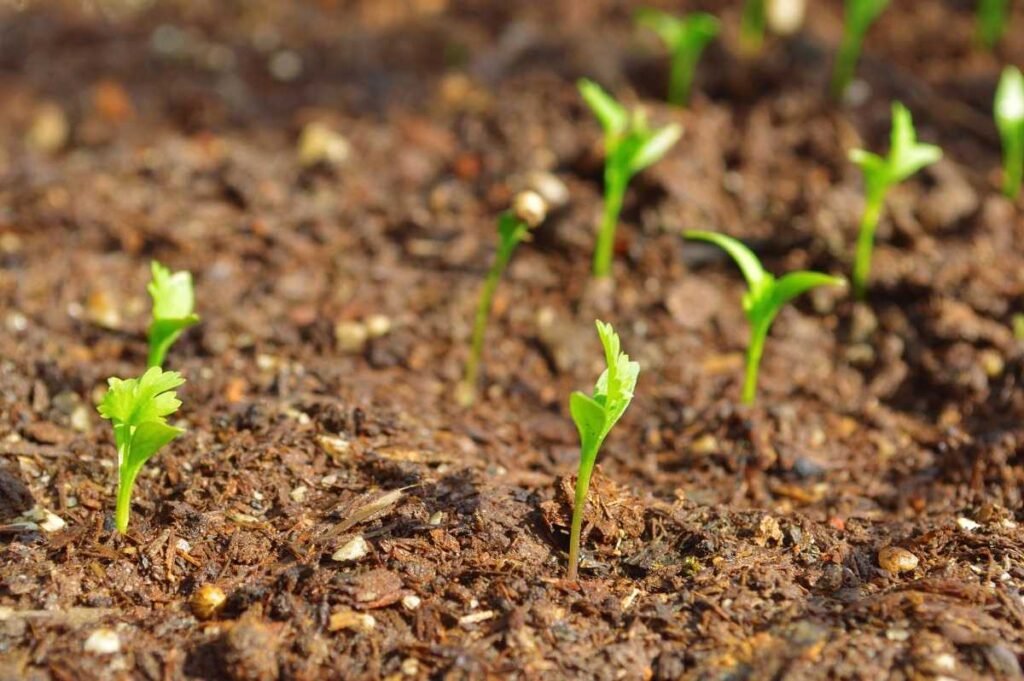
Seed Selection
Obtain cilantro seeds that are of premium quality, marked for sprouting or microgreens. If organic seeds are chosen then primal quality and absence of dangerous chemical exposure would be guaranteed. The seed selection is considered crucial as it impacts the entire growth process.
Growing Medium
Alternatively, a shallow tray or a container with sterile, soil-free growing mediums such as coconut coir, peat moss, or vermiculite can be used. Saturate the growing media uniformly to achieve moisture with enough water but without moisture excess for seed germination. Make sure to use the sterile growing media
Sowing Seeds
You can sprinkle or just broadcast the cilantro seeds uniformly on the surface of the growing medium and lightly work them into the soil, thus ensuring close seed-to-soil contact. Dust the seeds lightly with soil or vermiculite to promote the growth.
Germination and Growth
Place the tray under a warm in a well-lit area that includes indirect light, for example, a windowsill or underneath grow lights (the lamps used to grow plants indoors artificially). Regular watering but never soggy and misting to prevent drying out is the approach you should use.
Harvesting
During this 7 – 14-day period, my cilantro sprouts should mature and be ready to harvest. The conditions of the environment play a role in the process of sprouting. At this point, the sprouts are tall enough (1-2 inches) and have obtained a set of true leaves, they are considered ready to be harvested. Use the clean scissors or a sharp knife (cut cleanly just over the dirt level) to cut the stem, leaving the root intact.
Problems Faced In the Growth Process Of Clinatro Sprouts
Slow Germination
Cilantro seeds can sometimes be slow to germinate, especially if they are old or if the soil temperature is too cold. Make sure to use fresh seeds to prevent contamination and ensure optimum conditions for a healthy growth process.
Damping Off
Damping off is a fungal disease that affects seedlings, causing them to wilt and collapse at the soil level. It is usually caused by overwatering the media or poor air circulation, or using contaminated soil. Using sterile soil, providing good drainage, and avoiding overwatering can help prevent damping off in cilantro sprouts.
Leggy Growth
If cilantro sprouts are grown in low light conditions or if they are overcrowded, they may become leggy or elongated as they stretch toward the light. Providing adequate light and spacing out the seeds or seedlings can help prevent leggy growth.
Bolting
Cilantro is prone to bolting, which is when the plant prematurely produces flowers and seeds. This can be caused by high temperatures or stress, such as inconsistent watering or transplanting shock. To prevent bolting, keep cilantro plants well-watered and harvest the leaves regularly to encourage continued leaf growth.
Flavor Profile And Culinary Uses
Sprouted cilantro has an actual taste of cilantro, but it is sometimes more intense, to say the least. They incarnate the plant’s typical fresh citrus lime flavored addition, which includes medium sharpness and delicate sweetness. Whether you are adding cilantro sprouts to salads, sandwiches, soups, or tacos, their flavor is truly overwhelmingly strong which will make them an excellent addition to any dish.
1. Salads and Garnishes
Bring some flavor and texture through the application of cilantro sprouts on top of salads, wraps, and grain bowls as an added topping.
2. Tacos and Mexican Cuisine
The option of using cilantro sprouts is suggested as a taco, burrito, quesadilla, or nacho filling for some crunchiness and extra cilantro. Such a rich as well as sharp taste fits perfectly with spices and all that the dishes have, giving them a richer taste.
3. Soups and Stir-Fries
Cilantro sprouts can be used as a garnish in soup, stew, and stir-fry just before serving; this not only adds a refreshing and delightful flavor to the dish but also gives a greenish or bright touch.
4. Salads and Dips
Make your mouth water by mixing sprouts of cilantro in your salsas, guacamole, or creamy dips, for a natural, cilantro-flavored fulfillment. The fact that their leaves are a little softer and the sizes are almost similar to those of the ones we pick in our gardens allows them to contribute a beautiful shade of green color to dips and spreads thus increasing their flavor.
Conclusion
Similarly, sprouted cilantro is a very useful ingredient in that it can be eaten fresh as part of a salad with bread or can be added to soups, and sauces and will they not add flavor to a Sandwich too. The first advantage of organic produce weighs in on their unique taste – they are both spicy and fragile.
Be it a master chef consistent with trying out new culinary ideas or simply a person of nutritional value who wishes to improve what they eat, cilantro sprouts is a unique and interesting way to increase your consumption of nutrition. While integrating these exemplary products into your regular diet, you can reveal the numerous advantages they bring with the butterfly effect of exploding your palate with fuchsia, purple, and green letters of the alphabet.
Thus, in the coming time when you enjoy the walk through the produce aisle or play gardening in your home, make a list to buy cilantro sprouts if possible or plant them in your growing seeds. Embrace this herb with all the goodness, savor its freshness in the end, and your bodily reward is waiting for the inclusion of cilantro sprouts in your diet.
